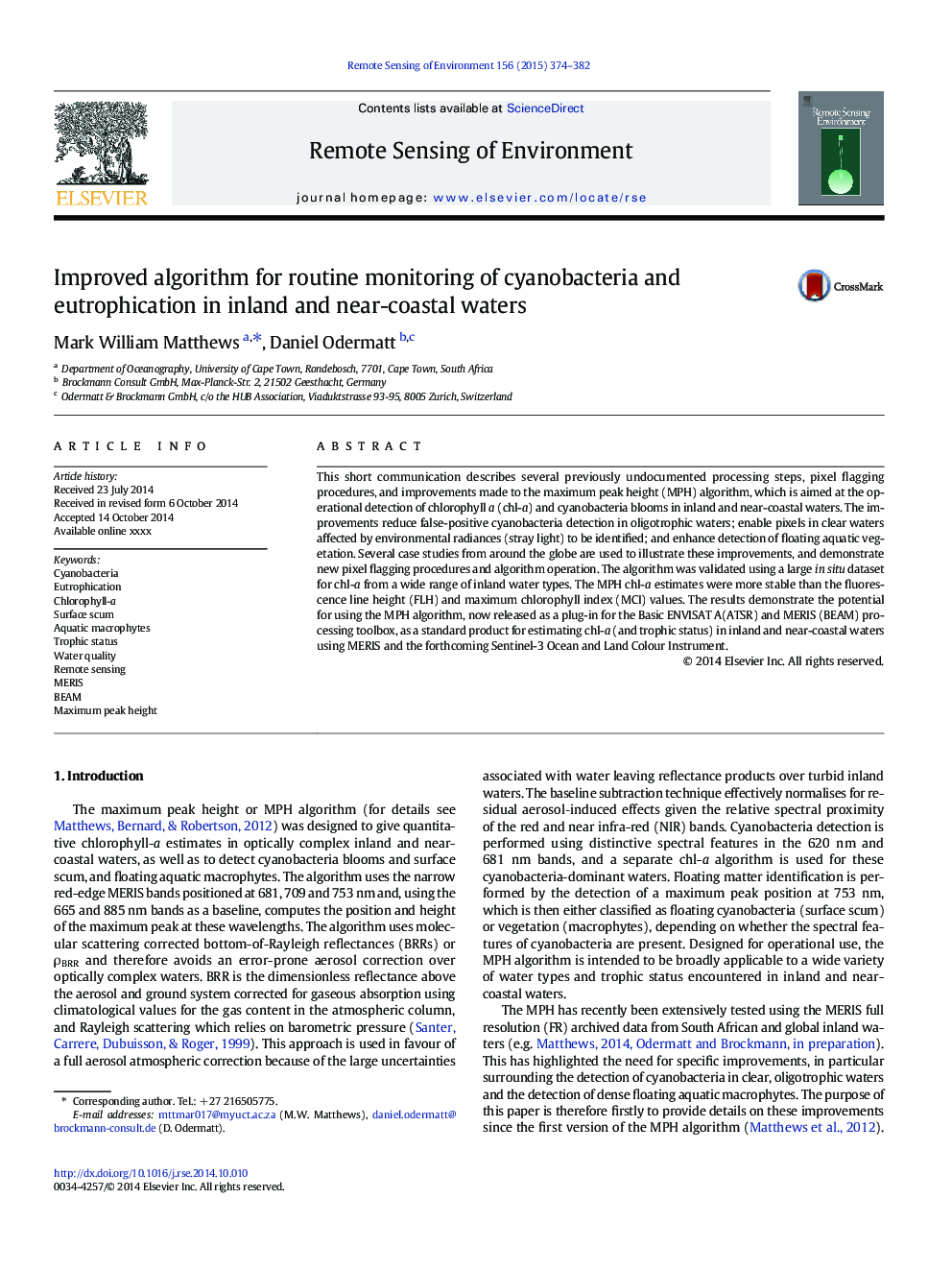| Article ID | Journal | Published Year | Pages | File Type |
|---|---|---|---|---|
| 6346545 | Remote Sensing of Environment | 2015 | 9 Pages |
Abstract
This short communication describes several previously undocumented processing steps, pixel flagging procedures, and improvements made to the maximum peak height (MPH) algorithm, which is aimed at the operational detection of chlorophyll a (chl-a) and cyanobacteria blooms in inland and near-coastal waters. The improvements reduce false-positive cyanobacteria detection in oligotrophic waters; enable pixels in clear waters affected by environmental radiances (stray light) to be identified; and enhance detection of floating aquatic vegetation. Several case studies from around the globe are used to illustrate these improvements, and demonstrate new pixel flagging procedures and algorithm operation. The algorithm was validated using a large in situ dataset for chl-a from a wide range of inland water types. The MPH chl-a estimates were more stable than the fluorescence line height (FLH) and maximum chlorophyll index (MCI) values. The results demonstrate the potential for using the MPH algorithm, now released as a plug-in for the Basic ENVISAT A(ATSR) and MERIS (BEAM) processing toolbox, as a standard product for estimating chl-a (and trophic status) in inland and near-coastal waters using MERIS and the forthcoming Sentinel-3 Ocean and Land Colour Instrument.
Keywords
Related Topics
Physical Sciences and Engineering
Earth and Planetary Sciences
Computers in Earth Sciences
Authors
Mark William Matthews, Daniel Odermatt,
